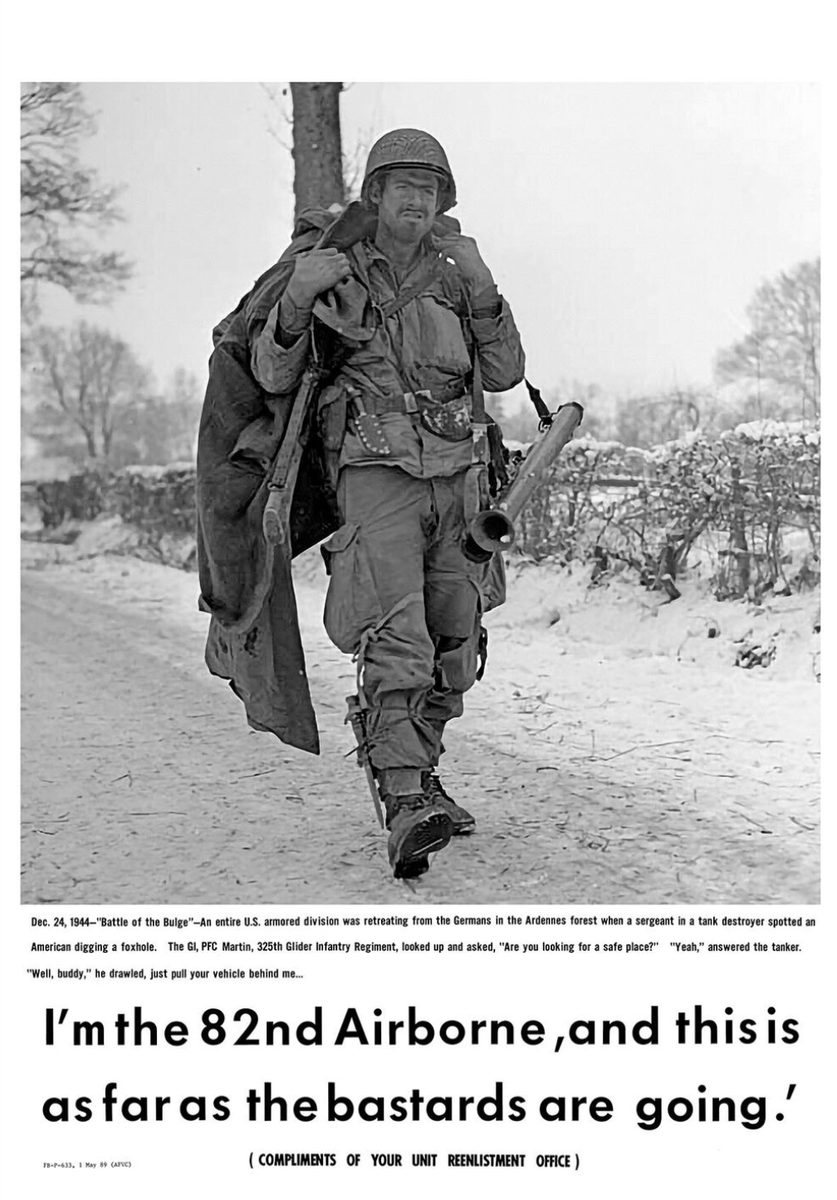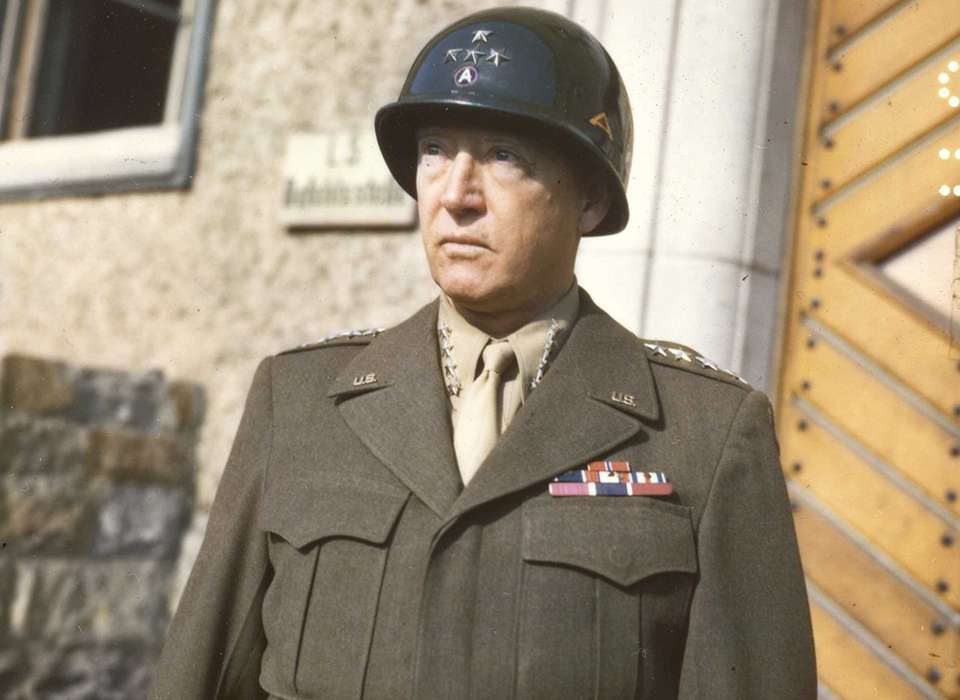
1 of 9:
One of the most-quoted stories from the Battle of the Bulge is a tale that's wrapped in legend. While the myth built around a famous quote is a good one, the TRUE story at the heart of this oft-told tale speaks to the ethos of the American Soldier.
Here's that story.
One of the most-quoted stories from the Battle of the Bulge is a tale that's wrapped in legend. While the myth built around a famous quote is a good one, the TRUE story at the heart of this oft-told tale speaks to the ethos of the American Soldier.
Here's that story.

[2 of 9]
DEC 23, '44: Early AM, the @82ndABNDiv is digging in along the front in the Ardennes just outside the town of St. Vith. The 82nd, one of the units rushed into the Ardennes after the Germans smashed through, is just looking to hold the line until tank forces can move in
DEC 23, '44: Early AM, the @82ndABNDiv is digging in along the front in the Ardennes just outside the town of St. Vith. The 82nd, one of the units rushed into the Ardennes after the Germans smashed through, is just looking to hold the line until tank forces can move in

[3 of 9]
A tank destroyer from the 7th Armored Division (one of the units smashed by the German Panzer forces in the initial, shocking German blow on December 16th) moving back from the front passes a lone 82nd trooper digging a foxhole.
A tank destroyer from the 7th Armored Division (one of the units smashed by the German Panzer forces in the initial, shocking German blow on December 16th) moving back from the front passes a lone 82nd trooper digging a foxhole.

4 of 9:
The tank destroyer commander stopped the vehicle and asked the trooper if this was the frontline.
The trooper, Private First Class Thomas Martin, replied, “Are you looking for a safe place?”
The vehicle commander replied that he was.
The tank destroyer commander stopped the vehicle and asked the trooper if this was the frontline.
The trooper, Private First Class Thomas Martin, replied, “Are you looking for a safe place?”
The vehicle commander replied that he was.

[5 of 9]
Martin: "Well, buddy, just pull your vehicle behind me. I am the 82nd Airborne and this is as far as the bastards are going!"
[The 20-year-old Martin hadn't yet actually seen combat and, he later revealed, didn't know that he was digging in against German Panzer tanks]
Martin: "Well, buddy, just pull your vehicle behind me. I am the 82nd Airborne and this is as far as the bastards are going!"
[The 20-year-old Martin hadn't yet actually seen combat and, he later revealed, didn't know that he was digging in against German Panzer tanks]

[6 of 9]
The story was first documented by a reporter in 1945 but was largely overlooked for two decades, until the quote became associated with this picture of a dirty, tough trooper named Private First Vernon K. Haught.
The story was first documented by a reporter in 1945 but was largely overlooked for two decades, until the quote became associated with this picture of a dirty, tough trooper named Private First Vernon K. Haught.

[7 of 9]
Now, keep in mind: Both Soldiers, Haught and Martin, were members of the 82nd Airborne's 325th Glider Regiment and they were both near St. Vith on this day, but Martin (not Haught) is the true author of this quote.
[Haught never actually even heard of this story]
Now, keep in mind: Both Soldiers, Haught and Martin, were members of the 82nd Airborne's 325th Glider Regiment and they were both near St. Vith on this day, but Martin (not Haught) is the true author of this quote.
[Haught never actually even heard of this story]

[8 of 9]
But, kick-@$$ quote and great pic: they really went together
In the 1960's, this recruiting poster, ("compliments of your unit reenlistment office") was created and a legend was born
The pic and quote work so well together that this poster inspired many of the decades
But, kick-@$$ quote and great pic: they really went together
In the 1960's, this recruiting poster, ("compliments of your unit reenlistment office") was created and a legend was born
The pic and quote work so well together that this poster inspired many of the decades

[END]
Why did this story resonate so widely?
It's clearly an inspiring quote from an overly confident Soldier telling a destroyer crew to follow him.
Beyond that, the pic + quote represent for generations the dirty, freezing troops who fought vs incredible odds in Ardennes.
Why did this story resonate so widely?
It's clearly an inspiring quote from an overly confident Soldier telling a destroyer crew to follow him.
Beyond that, the pic + quote represent for generations the dirty, freezing troops who fought vs incredible odds in Ardennes.

• • •
Missing some Tweet in this thread? You can try to
force a refresh





















